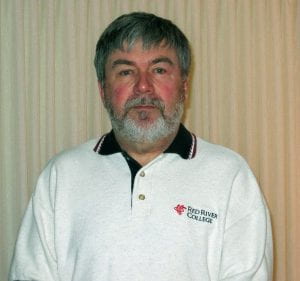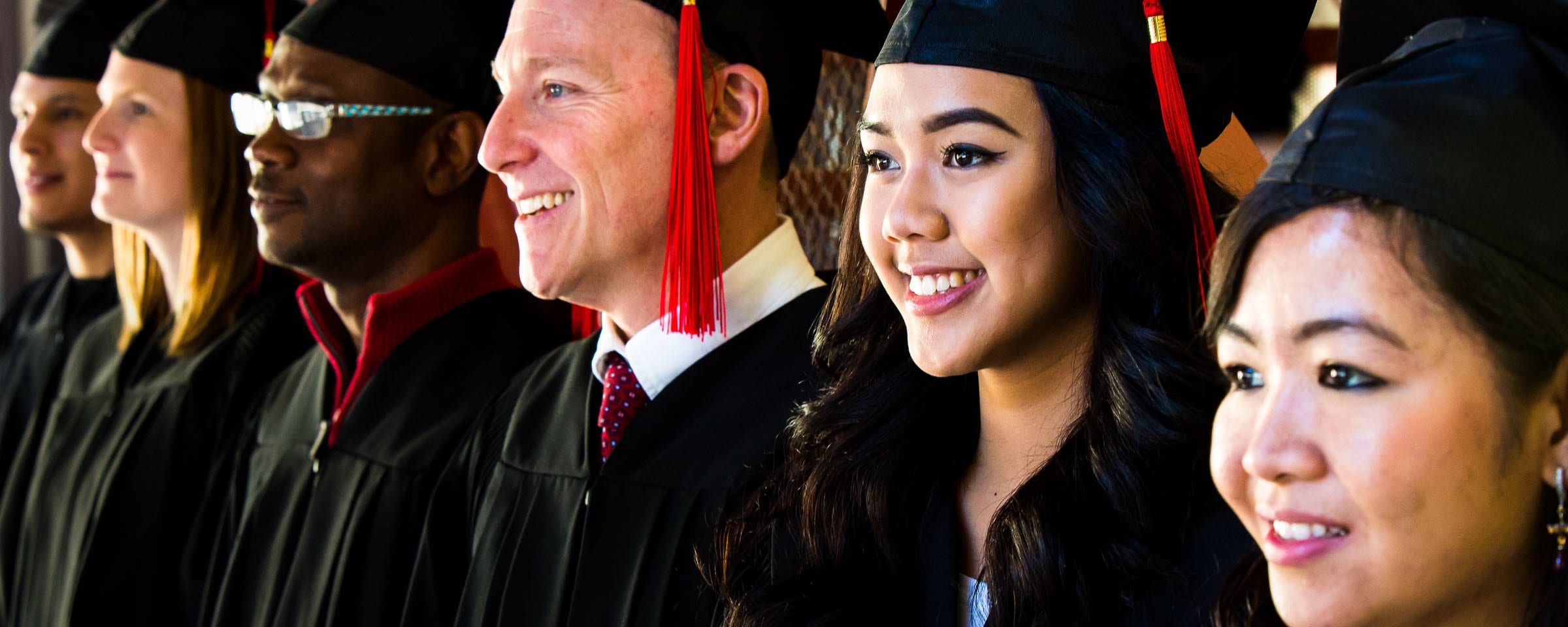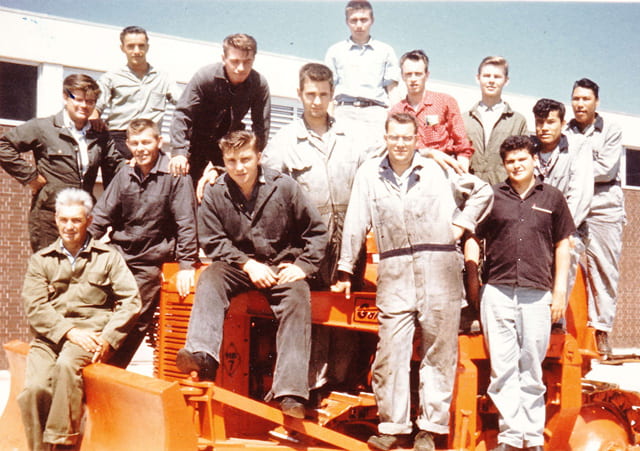Grad profile: Cliff Burton (Diesel 1965; Machine Shop 1967; Machine Drafting 1969)
It’s not often someone manages to kick-start their career by turning down one of the first job offers to come their way.
But that’s exactly how longtime Red River College instructor (and former student) Cliff Burton got started on the path toward teaching — by declining a job offer from the University of Manitoba in order to finish up his studies.
It was the mid-1960s, and Burton, then a young man, had recently completed the 10-month Diesel program at RRC (then called the Manitoba Institute of Technology). He was employed for a time rebuilding automotive engine heads and valves at Manitoba Bearing Works, and later at StandardAero, where he rebuilt aircraft engines. It was the latter position that twigged his interest in machining, and by 1966, he was back at MIT, enrolled in the 10-month Machine Shop course.
In April of the following year, Burton was offered a job building research equipment for the U of M’s Mechanical Engineering department. They wanted him to start immediately. Burton told them he wasn’t finished with his coursework.
“I told them that there were a lot more things left to learn, and I wanted to finish this course that I had started,” says Burton, who now teaches Related Math and Science at RRC. “Two weeks later the University phoned me back and said they were so impressed that I wanted to learn more, and finish what I had started, that they were willing to wait the three months for me to finish.”
Burton finished the Machine Shop course in June of ’67, signed on with the U of M, and within two months, was told he’d be instructing the practical machine shop labs and helping engineering students assemble their projects. After his first taste of instructing, he was hooked — and promised himself he’d pursue a career as a teacher.
After two years with the U of M, Burton signed up for a Machine Drafting course with MIT, assuming the training would dovetail nicely with his existing skills.
“I thought that with machine drafting, welding, machine shop and mechanical training in diesel, I could draw the plans, machine the parts, weld whatever was needed and assemble the projects without sending it out for others to do some of the project,” he explains.
When he returned to the U of M, it was as the head of a new research lab in mechanical testing, where Burton assisted a professor with metallurgical testing — designing, machining and building research equipment, and running tests of various metals and other aircraft materials.
In 1975, he saw a job posting for an Educational Assistant in Mechanical Technology at Red River College. Remembering his promise to pursue a teaching career, Burton applied for the job and got it, which put him one step closer to a full-time teaching position.
 “While working for Mechanical Technology, I took all the metals, welding technology, and metallurgy courses offered,” he recalls. “Both the instructors who taught these courses — Bill Patton and Wayne Parks — were very knowledgeable and did a fantastic job … I use this information, even now.”
“While working for Mechanical Technology, I took all the metals, welding technology, and metallurgy courses offered,” he recalls. “Both the instructors who taught these courses — Bill Patton and Wayne Parks — were very knowledgeable and did a fantastic job … I use this information, even now.”
Burton stayed busy for the next four years, complementing his metal courses with electrical courses and Teacher Education training, and teaching night school courses in Practical Math and Machine Theory (the latter for Interprovincial Red Seal certification). His superiors soon took notice, offering him a job teaching Related Math and Science to trades students — a post that led to a particularly memorable trip to an I-CAR Convention (Inter-Industry Conference on Auto Collision Repair) in Edmonton, accompanying fellow RRC instructor Orest Dobinsky and his “World’s Skinniest Car.”
“The skinny car was brought to Edmonton on a flat deck, but the hold-down straps were too tight and broke parts of the suspension,” Burton recalls. “We fixed it ourselves on the ballroom floor of this huge hotel, the night before opening day.”
In his 36 years as an instructor, Burton figures he’s taught upwards of 8,500 students, many of whom have gone on to become co-workers in RRC’s Math and Science, Auto Body and Automotive departments. He describes his round-trip path back to RRC — returning to his alma mater as an instructor — as the definition of success, and shows his gratitude by treating students to the full extent of his expertise.
“In teaching, the secret is to be organized and prepared, to do all the work in the books and exercises yourself, to prepare the handouts and make the PowerPoints,” he says.
“Then after all this, you can walk in and enjoy sharing your knowledge and insights. It really is an enjoyment.”

